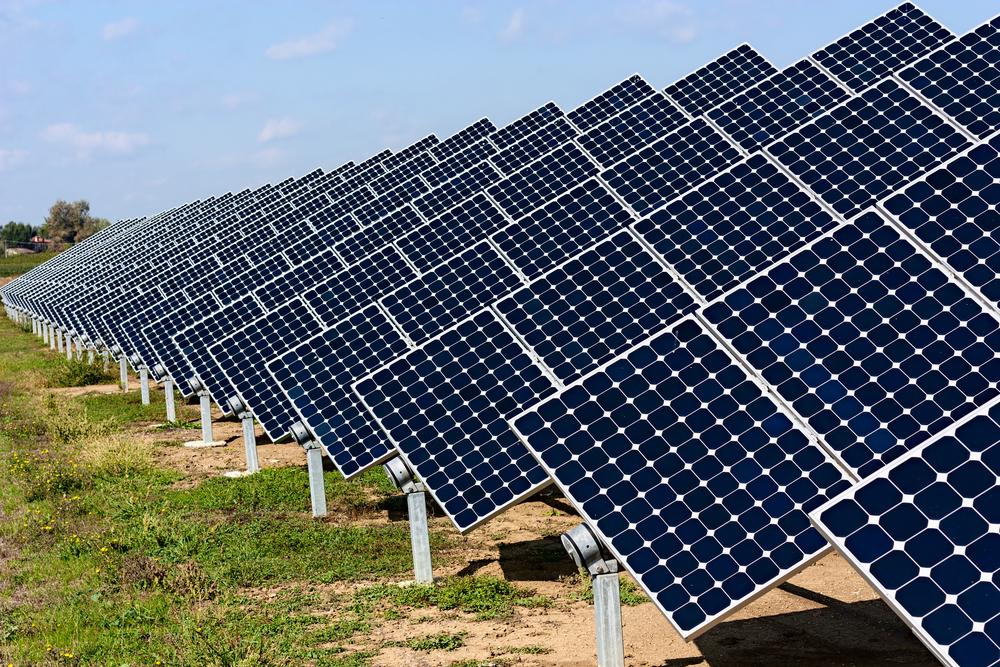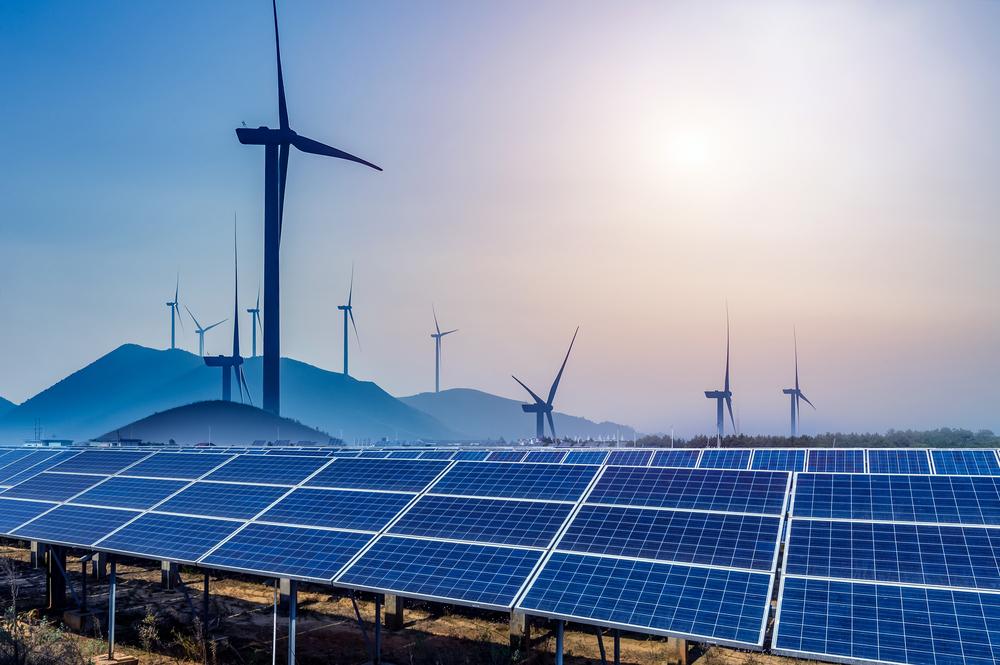As global energy consumption rises, finding sustainable ways to produce electricity is growing ever more important. Numerous renewable energy sources are available, such as wind and solar power, but which of these should you choose?
In this blog post, we’ll explore the potential of wind and solar power, their advantages and disadvantages over traditional fuel sources, and their suitability for different locations.
What is Wind Energy?
Wind energy is one of the oldest forms of renewable energy. It’s a form of solar energy that harnesses the kinetic power of wind and converts it into useful mechanical or electrical energy. Wind turbines are used to capture the wind’s kinetic power, converting it into electricity through an electric generator.
This electricity can then be stored in batteries or used to power businesses directly. Wind energy is clean and has few environmental impacts, making it an attractive renewable energy resource for many people.
Many countries worldwide have invested in wind farms and large collections of wind turbines that generate significant electricity. It is estimated that wind energy could potentially provide up to 20% of global electricity demand by 2050.
The wind turbine is also becoming more affordable and cost-efficient, making it a viable option as a solar power system for people looking to reduce their carbon footprint. With further technological advancements, wind energy could be the key to a cleaner and more sustainable future.
At present, wind power is mainly used for electricity generation across Europe and North America. In the US, wind power generates about 5% of total electricity generation. In some countries like Denmark, more than 40% of all power generated comes from wind.
However, the UK is one of the major players in this area of more green energy sources, with a growing number of wind farms across the country. Wind energy provides an important renewable energy source and is set to significantly contribute to meeting the growing global demand for electricity.
Pros of Wind and Solar Energy
The following are the pros of solar and wind energy:
1. Wind energy is a renewable power source, of energy which means it will never run out and is continually replenished. It does not emit any air pollution, making it an attractive form of clean and green energy.
2. Wind turbines are a more efficient power source and can produce large amounts of energy over their life span, making them an attractive form of energy generation in rural regions.
3. Wind turbines can be installed onshore or offshore, depending on the location’s wind patterns. This flexibility allows for greater access to potential sources of energy.
4. Wind energy has the potential to create thousands of new jobs in installation and maintenance, as well as related industries such as manufacturing and research & development.
5. Once installed, operating costs are relatively low since no fuel is required to move solar panels and the wind turbines generate energy from the wind.
6. Wind turbines and solar panels can be installed in areas unsuitable for traditional development forms, preserving natural habitats while providing clean energy.
7. Solar and Wind emit no carbon dioxide or other greenhouse gases, making it a form of clean energy that can help reduce our carbon footprint.
8. Wind is widely available in many parts of the world, making it an ideal renewable energy source.
9. With advances in technology, wind turbines are now much quieter than they used to be, reducing the noise pollution associated with wind energy production.
10. Wind turbines require minimal maintenance compared to other forms of energy generation, making the less maintenance of them an attractive option for green energy and producers.
Cons of Wind Energy
The following are the cons of wind energy:
1. Wind energy systems can be expensive to install, especially large-scale ones. It can cost millions of dollars to build just one wind turbine farm.
2. Wind turbines require reliable wind in order to generate electricity, so they are not always the best option for remote locations that don’t have access to regular wind sources.
3. Wind turbines can have a negative effect on the local environment by disturbing wildlife habitats, interfering with migration paths, and even affecting weather patterns in some areas.
What is Solar Energy?

Solar energy is the form of energy that is derived from the sun. It is one of the most abundant and clean sources of renewable energy available. Solar energy has been around since ancient times, but modern advances in technology have made it much easier to capture and convert into usable electricity or heat.
Solar power can be used to generate electricity, heat water for hot showers, or provide lighting for businesses. It can even be used to produce renewable fuels such as hydrogen. Solar energy is an incredibly efficient, clean, renewable energy source that will help reduce our dependence on fossil fuels and minimize greenhouse gas emissions.
With the right technology, solar energy could revolutionize how we power our businesses.
There are many benefits to utilizing a solar panel for energy, including reduced electricity bills, lower maintenance costs, and the potential to save on energy costs over time. Additionally, solar energy is a safe form of energy that will not damage the environment and do not pose any health risks when used properly.
As technology advances and becomes more affordable, solar energy will become increasingly accessible and play a bigger role in powering our lives.
Pros of Solar Energy
Here are some of the pros of solar energy:
1. Solar energy is renewable and can be used endlessly without running out.
2. Solar energy does not produce any pollutants or greenhouse gases, making it environmentally friendly to use.
3. Solar energy can be used both in off-grid solar farms and on-grid to provide clean, green, reliable power for businesses and even entire communities.
4. It is easy to install and does not require complex wiring or costly infrastructure.
5. Solar energy is silent and does not produce any noise pollution.
6. Solar energy systems are versatile and can be used to power a wide range of applications, from lighting to powering entire cities.
Cons of Solar Energy
1. Solar energy is a relatively expensive renewable power source compared to traditional sources such as coal and natural gas. The high installation costs make it difficult for many households or businesses to install solar panels independently.
2. Weather conditions can greatly influence the amount of energy a solar panel system produces, leading to inconsistent energy production.
3. Solar energy systems require the same amount of regular maintenance and upkeep. The panels must be cleaned regularly to ensure optimal performance, and the batteries must be replaced periodically.
4. Many solar panel systems are not designed for long-term use and may need to be upgraded or replaced after a few years of operation in order to maintain maximum efficiency.
Comparison of Cost, Maintenance, and Efficiency between Wind and Solar Power

Wind and other energy, compared to solar power, are renewable sources of energy that can be used to generate electricity. However, there are significant differences between the two in terms of cost, maintenance, and efficiency.
Cost:
Wind power is generally less expensive than solar power, especially for large-scale projects, due to the lower initial outlay required. Solar power, however, is the most cost-effective choice for residential projects because of its affordability and availability.
Maintenance:
Wind turbines require frequent maintenance to keep them running at optimal efficiency; this includes regular inspections and repairs as necessary. Solar cells and panels, on the other hand, are much simpler to maintain and only need occasional cleaning.
Efficiency:
Wind energy is generally more efficient than solar power because of its greater availability and ability to generate electricity even at low wind speeds. However, solar energy is the most reliable renewable energy source due to its ability to produce electricity even on cloudy days.
Overall, both wind and solar energy are viable alternatives for generating electricity. It is important to consider the cost, maintenance, and efficiency of each when choosing which one to invest in. Depending on the specific needs of each project, one may be more advantageous than the other.
Conclusion
All in all, choosing between wind and solar energy is a deeply subjective decision. Weighing up the pros and cons, it’s clear that although wind and solar have individual advantages, they both help tackle climate change while providing clean energy.
While one might be the better option for your business than the other, ultimately, it will depend on which works best with your budget, location, and lifestyle. Ultimately, whether you go wind or solar, you can feel confident that it’s an important part of taking care of our planet for generations to come.
Together, these technologies offer hope for a cleaner future powered by renewable energy resources that are sustainable in our fight against climate change. VertPro® can help you make a better choice. Sign up today to make your life easier!

